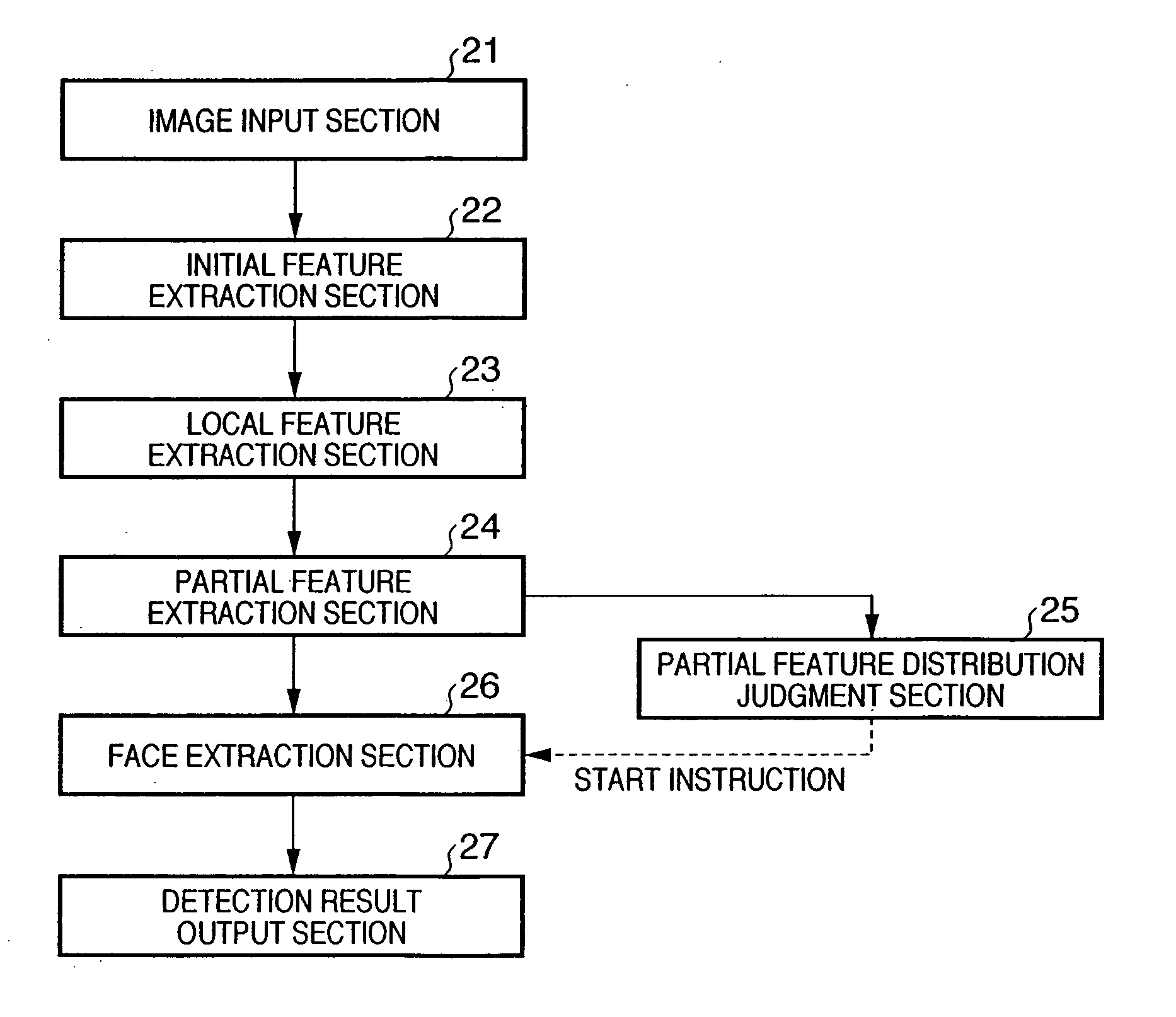Pattern identification method, device thereof, and program thereof
a pattern recognition and input signal technology, applied in the field of recognizing the pattern of input signals, can solve the problems of high processing cost, affecting the detection accuracy of the input signal, and being vulnerable to a plurality of face sizes and a change in the face direction, so as to reduce the possibility of identification errors and processing costs.
- Summary
- Abstract
- Description
- Claims
- Application Information
AI Technical Summary
Benefits of technology
Problems solved by technology
Method used
Image
Examples
first embodiment
[0062] As the first embodiment of the present invention, a method which uses two-dimensional image data as input data and identifies whether or not that image data belongs to a specific category will be described.
[0063] This embodiment assumes, as identification categories, face-present images, in each of which the vicinity of the center of a face is present at nearly the center of an input image, like images i to iv in FIG. 4, and a face-absent image as an image other than the face-present images like an image v in FIG. 4, and a method of identifying to which of the two categories input image data belongs will be described.
[0064] This embodiment makes identification as to whether or not an image includes a face. However, the present invention is not limited to this, and may be applied to a case wherein input data is audio data. This embodiment also makes identification as to whether or not input image data belongs to a single category, i.e., a face. However, the present invention...
second embodiment
[0104] The second embodiment will explain a method of detecting the location of a face in an image using two-dimensional image data as input data as a modification of the first embodiment. In this embodiment, a process for detecting a face in an image is made. However, the present invention is not limited to this, and may be applied to other image patterns, and a case wherein input data is audio data. Also, the present invention can be applied to a case wherein a plurality of categories are to be detected.
[0105] This embodiment uses, as a method of detecting a specific pattern robustly against variations by hierarchical feature extraction, a Convolutional Neural network (to be abbreviated as CNN hereinafter) by changing its basic configuration. FIG. 7 shows the basic configuration of the CNN. A basic process of the CNN will be described below using FIG. 7. In FIG. 7, process flow advances rightward to have the left end as an input.
[0106] In FIG. 7, reference numeral 71 denotes a p...
third embodiment
[0139] The third embodiment of the present invention is a modification of the second embodiment. This embodiment also executes a process for detecting a face in an image as in the second embodiment. However, the present invention is not limited to this, and may be applied to other image patterns and audio data. Also, the present invention can be applied to a case wherein objects of a plurality of categories are to be detected.
[0140]FIG. 10 shows the arrangement of processing sections in this embodiment. FIGS. 11A and 11B show the flow of processes in this embodiment. The arrangement of basic processes in this embodiment is the same as that described in the second embodiment. The processes in this embodiment will be described below using FIG. 10.
[0141] Since processes (steps S1101 to S1109) from an image input section 1001 to a flesh color region extraction section 1007 in FIG. 10 are the same as those in steps S901 to S909 in the second embodiment, a description thereof will be om...
PUM
 Login to View More
Login to View More Abstract
Description
Claims
Application Information
 Login to View More
Login to View More - R&D
- Intellectual Property
- Life Sciences
- Materials
- Tech Scout
- Unparalleled Data Quality
- Higher Quality Content
- 60% Fewer Hallucinations
Browse by: Latest US Patents, China's latest patents, Technical Efficacy Thesaurus, Application Domain, Technology Topic, Popular Technical Reports.
© 2025 PatSnap. All rights reserved.Legal|Privacy policy|Modern Slavery Act Transparency Statement|Sitemap|About US| Contact US: help@patsnap.com



